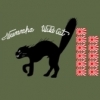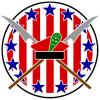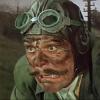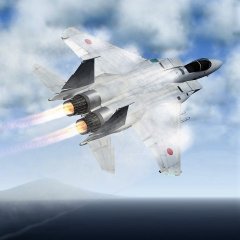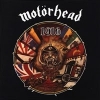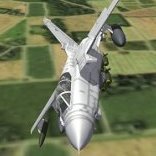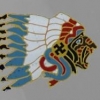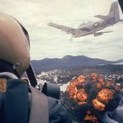Leaderboard
Popular Content
Showing most liked content on 11/20/2018 in Posts
-
17 points
-
5 points'In the summer of 1945, approximately 30 P-80As were sent aboard an aircraft carrier to the Philippines in preparation for the final assault on Japan. The planes were to be issued to the 414th Fighter Group, based at Florida Blanca. Unfortunately, the planes had been sent without their tip tanks and their aircraft batteries, so they sat aboard the aircraft carrier for 30 days waiting for this equipment. By the time that the batteries and wingtip tanks were delivered, the war in the Pacific had ended, so the P-80 never got a chance to enter combat in the war against Japan." http://www.joebaugher.com/usaf_fighters/p80_12.html 413th Fighter Squadron, 414 Fighter Group, Okinawa 1945/46 437th Fighter Squadron,414 Fighter Group, Okinawa 1945/46 456th Fighter Squadron,414 Fighter Group, Okinawa 1945/46 * First two are in the pearl grey paint applied to the first P-80A aircraft and wasn't used for very long as it didn't last in the field. Last screen shot is natural metal. Thanks to Wrench for the template and original 'what if' PTO P-80A 416FG
-
4 pointsOver the years, the modders at Combat Ace have made a pretty comprehensive addition to FE that rivals the stock game. If you are building your Eastern Front: I recommend ojcar's campaigns - Armchair Aces over Galicia. The list of planes is long but it matches what Crawford posted pretty closely - using whatever planes we have available for FE. https://combatace.com/files/file/15533-armchair-aces-over-galicia/ I also recommend Capitaine Vengeur's medals and pilots from his Beyond the Western Front series https://combatace.com/files/file/15954-ww1-medals-pack-for-fe-beyond-the-western-front/ https://combatace.com/files/file/14447-ww1-pilots-pack-beyond-the-western-front/ Both of them did a lot of research to make everything as accurate as possible.
-
4 pointsIn the field units of the German aviation of that era, the principle of the diversity of the machines adopted was dominant. Of the linear machines at the beginning of the war, of course, Albatrosses of all early types, as well as Rumplers, Aviatiks, LVG and DFW. In the summer of 1917 - Albatrosses from C.III to C.X, Rumplers mainly C.Ia, and DFW C.V. Roland C.II "Whales" were sometimes met in Galicia and the Baltic in the form of single specimens. Of the fighters, first are the Pfalz eindekkers, and of course the Fokkers. The Fokker E was the most massive fighter of the German Army on the Eastern Front. The first armed eindekkers by Fokker E.II - they began to operate in the winter of 1915-16. Of the D-type biplanes - Halbershtats, Fokkers and Rolands (there were most of them), from the end of the summer of 1917 they were gradually superseded by the Albatros D.III of the OAW production. The German Aces on the Eastern Front at the time of the "peak" of their victories flew on the following planes: Hans Pipparth - a Roland D. II, K. Gallwitz - a Roland D. III, G. Knappe - the Albatross D. II. Only Pippart (who fought from February 1916 to April 1917) and Leopold Anslinger became the Ases on the Eastern Front. Wilhelm Frickert on the Eastern Front scored 7 victories, but only 2 of them fell on airplanes (“Voisin” type), and the remaining 5 accounted for balloons. Karl Gallwitz "earned" in the East Iron Crosses of the 1st and 2nd classes, but both for 2 Russian balloons. https://warspot.ru/7408-tsveta-voennogo-neba-asy-dvuh-kayzerov-na-vostochnom-fronte
-
3 points
-
3 pointsDoing a lot of stuff now more appropriate for the What-If file, but decided to simulate the 1982 Israeli-Syrian war for a bit... so busy didn't have time to hit ALT-D!
-
3 points
-
3 pointsNo german Jastas in the East Front. The german and austrian fighters were attached to the two-seater units in small quantities. In 07/01/17 Jadgflieger Ober-Ost was formed (basically an ad-hoc fighter unit with planes from the two seater units, similar to the KEKs of Western Front in 1915-16). This unit moved out the Galician front in August and came back in September, It became Jasta 81 in October 1917, the only Jasta in the entire Eastern Front.
-
2 points
-
2 points
-
1 point
-
1 pointAre you trying to add a acutal static aircraft, or use one of the stock 3w lods? Using the stock aircraft don't work, even with all their extracted lods (also illeagle) placed in the terrain's folder. If using one of the (very) few available freeware statics (for example, a P-51) the statements would look like this: This is take right from one of my WW2 terrains, so we know it works Mind you, this is a very old LOD (2005-ish) and does have it's own destroyed model. The hard part, expecially for these ancient units, is running down all the missing pieces (usually the prop and canopy tgas). One needs to search the lod with a hex editor to find them. as to the armor values and types, I can't remember
-
1 point
-
1 point
-
1 point
-
1 pointSmall F1CT update available in the F1CT support thread (link)
-
1 point
-
1 point
-
1 point
-
1 pointThanks Crawford. I'm not enough time in WW1- theme and I'll make new wright skin of AnatraDS in near future.
-
1 point
-
1 point
-
1 point
Important Information
By using this site, you agree to our Terms of Use, Privacy Policy, and We have placed cookies on your device to help make this website better. You can adjust your cookie settings, otherwise we'll assume you're okay to continue..



